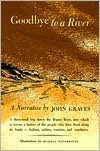Photo credit: Debbie Winogracki
Jean is a Jersey girl by birth, now far from those home roots, but deeply concerned about the Jerseyites who have been made homeless by Hurricane Sandy. "Why," she asks, "can't many of those people be given a place to stay at Ft. Monmouth?" Ft. Monmouth, some will know, has been shuttered, with the military services formerly sited there removed to another location. Ft. Monmouth has many empty residential facilities, was not damaged in the storm, is located close to Tom's River where so many homes were ruined, and was very recently closed so the buildings there should be in good shape. How about it??? Such a solution would surely relieve the distress of many people who have been so hard-hit and would allow for good use of an empty military facility!






